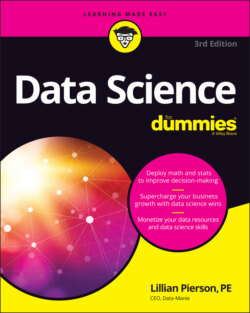Читать книгу Data Science For Dummies - Lillian Pierson - Страница 66
Conditional probability with Naïve Bayes
ОглавлениеYou can use the Naïve Bayes machine learning method, which was borrowed straight from the statistics field, to predict the likelihood that an event will occur, given evidence defined in your data features — something called conditional probability. Naïve Bayes, which is based on classification and regression, is especially useful if you need to classify text data.
To better illustrate this concept, consider the Spambase dataset that’s available from University of California, Irvine’s machine learning repository (https://archive.ics.uci.edu/ml/datasets/Spambase). That dataset contains 4,601 records of emails and, in its last field, designates whether each email is spam. From this dataset, you can identify common characteristics between spam emails. After you’ve defined common features that indicate spam email, you can build a Naïve Bayes classifier that reliably predicts whether an incoming email is spam, based on the empirical evidence supported in its content. In other words, the model predicts whether an email is spam — the event — based on features gathered from its content — the evidence.
When it comes to experimentation, multinomial and binomial distributions behave similarly, except those multinomial distributions can produce two or more outcomes, and binomial distributions can only produce two outcomes.
Naïve Bayes comes in these three popular flavors:
MultinomialNB: Use this version if your variables (categorical or continuous) describe discrete frequency counts, like word counts. This version of Naïve Bayes assumes a multinomial distribution, as is often the case with text data. It does not accept negative values.
BernoulliNB: If your features are binary, you can use multinomial Bernoulli Naïve Bayes to make predictions. This version works for classifying text data but isn’t generally known to perform as well as MultinomialNB. If you want to use BernoulliNB to make predictions from continuous variables, that will work, but you first need to subdivide the variables into discrete interval groupings (also known as binning).
GaussianNB: Use this version if all predictive features are normally distributed. It’s not a good option for classifying text data, but it can be a good choice if your data contains both positive and negative values (and if your features have a normal distribution, of course).
Before building a Bayes classifier naïvely, consider that the model holds an a priori assumption — meaning that its predictions are based on an assumption that past conditions still hold true. Predicting future values from historical ones generates incorrect results when present circumstances change.
